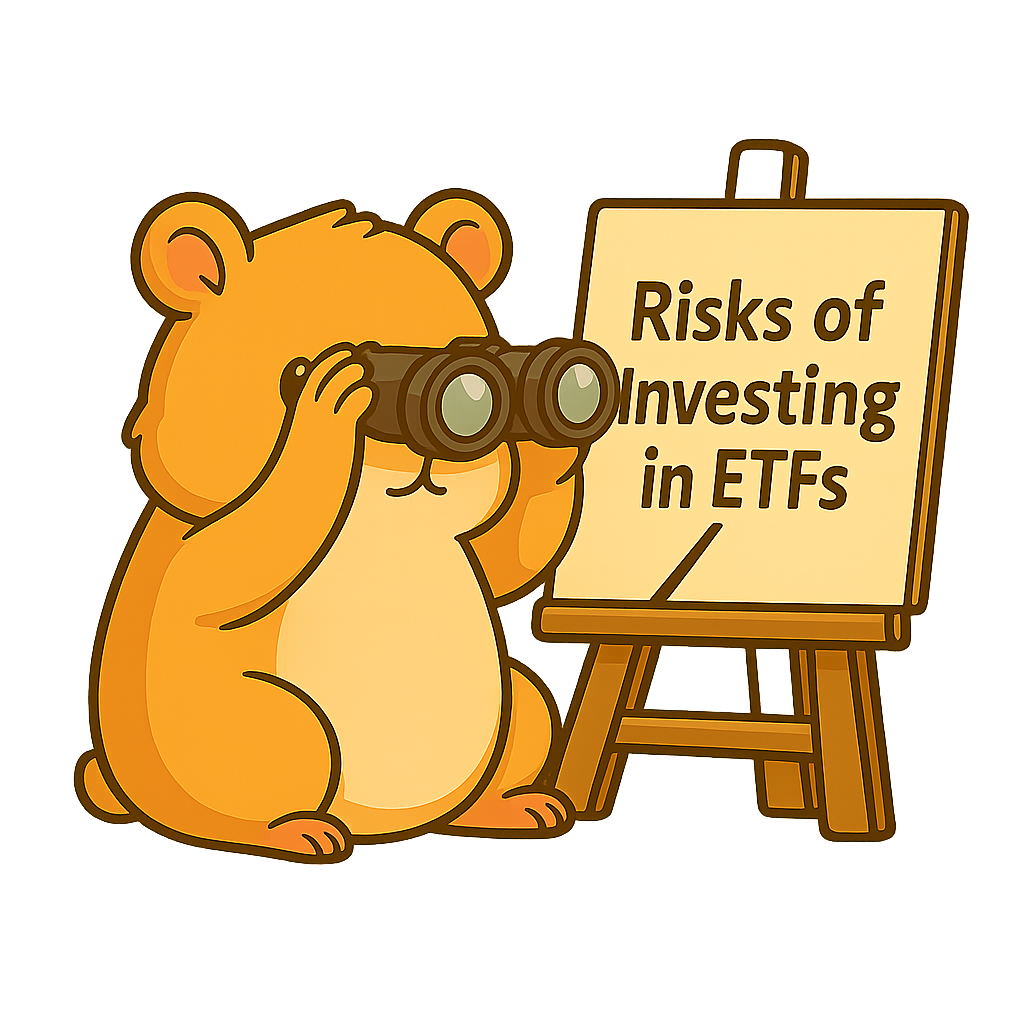Understanding the Downsides: A Balanced View of ETF Risks
Investing in ETFs offers significant benefits, but understanding the risks of ETFs is crucial to making informed financial decisions. While ETFs provide diversification, liquidity, and cost-efficient exposure to global markets, investors must navigate potential challenges such as market volatility, tracking errors, liquidity concerns, and evolving policy changes in 2025. Awareness of these risks helps you protect your investments and maximize long-term returns.

This comprehensive guide breaks down the key ETF risks, including risks in the market, concentration risk, counterparty risk, and more, in clear, easy-to-understand terms. Tailored for those searching for “risks of investing in ETFs” or “ETF disadvantages 2025,” it uses practical examples, charts, and current trends to provide actionable insights.
With understanding these risks, you can implement smart investment strategies, diversify your portfolio effectively, and build a resilient ETF portfolio designed to achieve your financial goals. Start investing with confidence and make your money work smarter for you.
Market Risk: The Inherent Volatility of Underlying Assets
The risk in market, or systematic risk, is the chance that the entire market declines, pulling your ETF down with it. Since ETFs track assets like stocks or bonds, they’re exposed to broad economic shifts.
How Risk in Market Manifests
When stocks plummet due to a recession, a stock ETF will follow suit. Think of it as riding a wave—the market’s ups and downs affect the whole surfboard (ETF).
In 2025, market risk is heightened by policy risks and stagflation fears, prompting investors to turn to defensive ETFs.nasdaq.com Volatility from global events, like trade tensions, amplifies this.
Impact and Examples
A broad stock ETF might lose 20% in a downturn, as seen in past crashes. Bond ETFs face interest rate risks, where rising rates lower bond values.
| Risk Factor | Example Impact | Mitigation Tip |
|---|---|---|
| Economic Downturn | Stock ETFs drop | Diversify with bonds |
| Inflation Spikes | Commodity ETFs vary | Allocate modestly |
2025 Context
With AI trends and crypto integration adding unpredictability, market risk remains top of mind.etftrends.com
Tracking Error: When ETFs Don’t Mirror Perfectly
Tracking error occurs when an ETF’s performance deviates from its benchmark index due to fees, sampling methods, or market conditions.
Breaking Down Tracking Error
Ideally, an ETF matches its index exactly, but small gaps arise—e.g., a 0.5% annual drift from expenses.
Active ETFs’ growth introduces variable tracking in 2025, as they aim to outperform rather than match.ey.com
Risks and Real-World Effects
Higher error erodes returns; international ETFs might face more due to currency conversions.
Strategies to Minimize
Choose low-error funds; review historical tracking data.
Liquidity Risk: Challenges in Buying or Selling
Liquidity risk arises when an ETF is hard to trade without affecting its price, especially in niche or low-volume funds.
Liquidity Issues Explained
Popular ETFs trade smoothly, but obscure ones might have wide bid-ask spreads, costing you money.
Mid-2025 sees liquidity concerns in volatile markets, though overall ETF trading volume is strong.ey.com
Examples and Consequences
During stress, like 2020’s flash crashes, some ETFs traded at discounts. Inverse ETFs amplify this.
| Liquidity Indicator | High Liquidity | Low Liquidity |
|---|---|---|
| Daily Volume | Millions of shares | Under 100,000 |
| Spread Impact | Minimal | Higher costs |
Tips for 2025
Stick to large AUM ETFs (> $1 billion) for better liquidity.
Counterparty Risk: Dependencies in Complex ETFs
In ETFs using derivatives (e.g., leveraged or inverse), counterparty risk is the chance the other party defaults on obligations.
Understanding This Risk
Like a chain link, if a swap provider fails, the ETF suffers.
2025 trends include increasing derivative use in active ETFs, raising this risk.statestreet.com
Mitigation Approaches
Opt for physically backed ETFs; monitor provider stability.
Concentration Risk: Overexposure in Thematic ETFs
Thematic or sector ETFs can concentrate holdings in one area, leading to big swings if that theme falters.
Concentration Explained
An AI-themed ETF might thrive in booms but crash if regulations hit tech.
In 2025, with thematic ETFs leading innovation, concentration is a growing concern.im.natixis.com
Balancing Act
Limit to 10% of portfolio; diversify across themes.
Currency Risk: Fluctuations in International ETFs
For global ETFs, currency risk stems from exchange rate changes affecting returns.
How It Works
A strengthening home currency can erode foreign gains.
Amid 2025’s geopolitical shifts, currency volatility is key.corporate.vanguard.com
Hedging Strategies
Use currency-hedged ETFs.
Additional Risks: Leverage, Regulatory, and Behavioral
Leveraged ETFs magnify losses; regulatory changes could impact structures. Behavioral risks include panic selling.
2025 highlights include balancing opportunities with these in ETF trends.corporate.vanguard.com
Comparing Risks Across ETF Types
| Risk Type | Stock ETFs | Bond ETFs | Thematic ETFs |
|---|---|---|---|
| Market | High | Medium | High |
| Liquidity | Low | Medium | High |
| Concentration | Low | Low | High |
Common Mistakes and Avoidance
Ignoring risks in hot trends; always assess tolerance.
Mini-FAQ on ETF Risks
- Biggest 2025 risk? Market volatility from policies.
- How to reduce? Diversify and research.
Conclusion: Managing Risks for Smarter ETF Investing
Understanding risks of ETFs like market and liquidity issues empowers better decisions in 2025’s evolving market. Balance with advantages for success.

